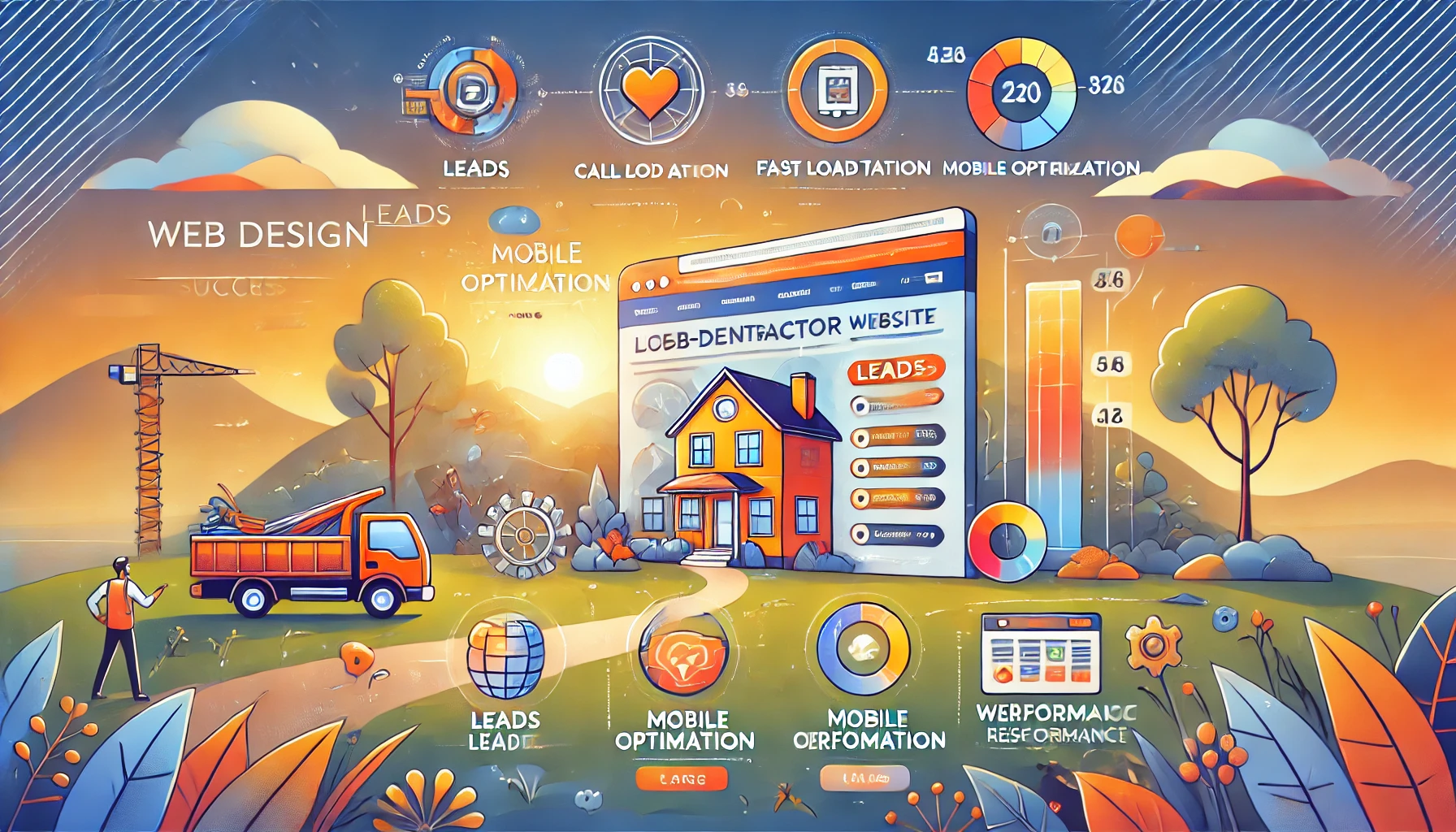Your website is one of the most powerful tools you have for generating leads as a contractor. An effective contractor web design not only helps visitors find the information they need but also encourages them to take action—whether that’s contacting you for a quote, booking a service, or signing up for a consultation. In this post, we’ll explore how key elements of web design can directly impact your ability to generate leads and grow your contractor business.
User-Friendly Navigation Improves Engagement
A well-organized, easy-to-navigate website keeps visitors engaged and leads them to the information they’re seeking. Homeowners looking for contractors often want to quickly find your services, reviews, and contact information. If your website is cluttered or confusing, potential clients are more likely to leave and visit a competitor’s site. Here’s how to optimize your site’s navigation:
- Clear Menu Structure: Organize your menu with essential pages such as Services, About, and Contact. Avoid overloading the menu with too many options.
- Clickable Phone Numbers: Make your phone number easily accessible and clickable, especially on mobile devices, so visitors can call you instantly.
- Prominent Call-to-Action Buttons: Use eye-catching call-to-action (CTA) buttons like “Request a Quote” or “Get a Free Estimate” throughout your site to guide visitors toward conversion.
Contractor Web Design With Good Mobile Optimization Boosts Search Rankings
With more homeowners using smartphones to find local contractors, mobile optimization in your contractor web design is crucial for both user experience and SEO. Google prioritizes mobile-friendly websites, and failing to optimize your site for mobile devices can hurt your search rankings and lead generation efforts. Here’s how mobile optimization can help:
- Responsive Design: Ensure your website adapts to any screen size, from smartphones to desktops. A responsive design guarantees that your site looks professional and functions well on all devices.
- Fast Load Times on Mobile: Mobile users expect quick access to information. Compress images, minimize code, and reduce unnecessary plugins to improve your site’s load speed on mobile devices.
- Touch-Friendly Features: Make sure your website’s buttons, forms, and navigation are easy to use on touchscreens, improving overall user experience and boosting the likelihood of conversions.
Visual Design Builds Trust
A professionally designed website builds trust with potential clients. Homeowners want to hire contractors who take pride in their work, and your website serves as a reflection of your business’s professionalism and attention to detail. A visually appealing design helps establish credibility, making visitors more likely to reach out. Here are some key visual design elements:
- Consistent Branding: Use consistent colors, fonts, and imagery that reflect your brand. Consistent branding creates a cohesive and trustworthy online presence.
- High-Quality Images: Include high-quality images of your completed projects, team members, and equipment. Avoid using generic stock photos, as real images create a more authentic connection with potential clients.
- Clean Layout: A clean, uncluttered layout makes it easier for visitors to navigate your site and focus on the important information, such as your services and contact details.
Fast Load Times Improve User Retention
Website speed is a critical factor in retaining visitors and generating leads. Studies show that websites taking longer than a few seconds to load often see higher bounce rates, meaning visitors leave before engaging with the content. Improving your site’s load times can keep visitors on the page longer, increasing the likelihood of conversions. Here’s how to optimize speed:
- Optimize Images: Compress large image files without sacrificing quality to reduce page load times.
- Use Browser Caching: Implement browser caching to allow returning visitors to load your site faster by storing elements in their browsers.
- Reduce HTTP Requests: Minimize the number of scripts, plugins, and external resources that need to load on your site to improve performance.
Contractor Web Design With Strong CTAs Drive Conversions
A call-to-action (CTA) is one of the most important elements for converting website visitors into leads. Whether it’s a button prompting visitors to “Schedule a Consultation” or a form encouraging them to “Get a Free Estimate,” strong CTAs guide users toward taking action. Here’s how to make your CTAs more effective:
- Clear and Actionable Language: Use direct, action-oriented language in your CTAs. Phrases like “Get a Quote Now” or “Contact Us Today” make it clear what visitors should do next.
- Visually Prominent: Make your CTAs stand out by using contrasting colors and larger fonts. Place them in strategic locations throughout your site, such as the top of your homepage, service pages, and at the end of blog posts.
- Simple Forms: Keep lead generation forms short and simple. Only ask for essential information like name, phone number, and project details to avoid overwhelming visitors.
Conclusion
Effective contractor web design plays a significant role in generating leads for contractors. By focusing on user-friendly navigation, mobile optimization, visual design, fast load times, and strong CTAs, you can create a website that not only attracts visitors but also encourages them to take action. Invest in improving your contractor website’s design, and you’ll see a direct impact on your lead generation and overall business growth.
